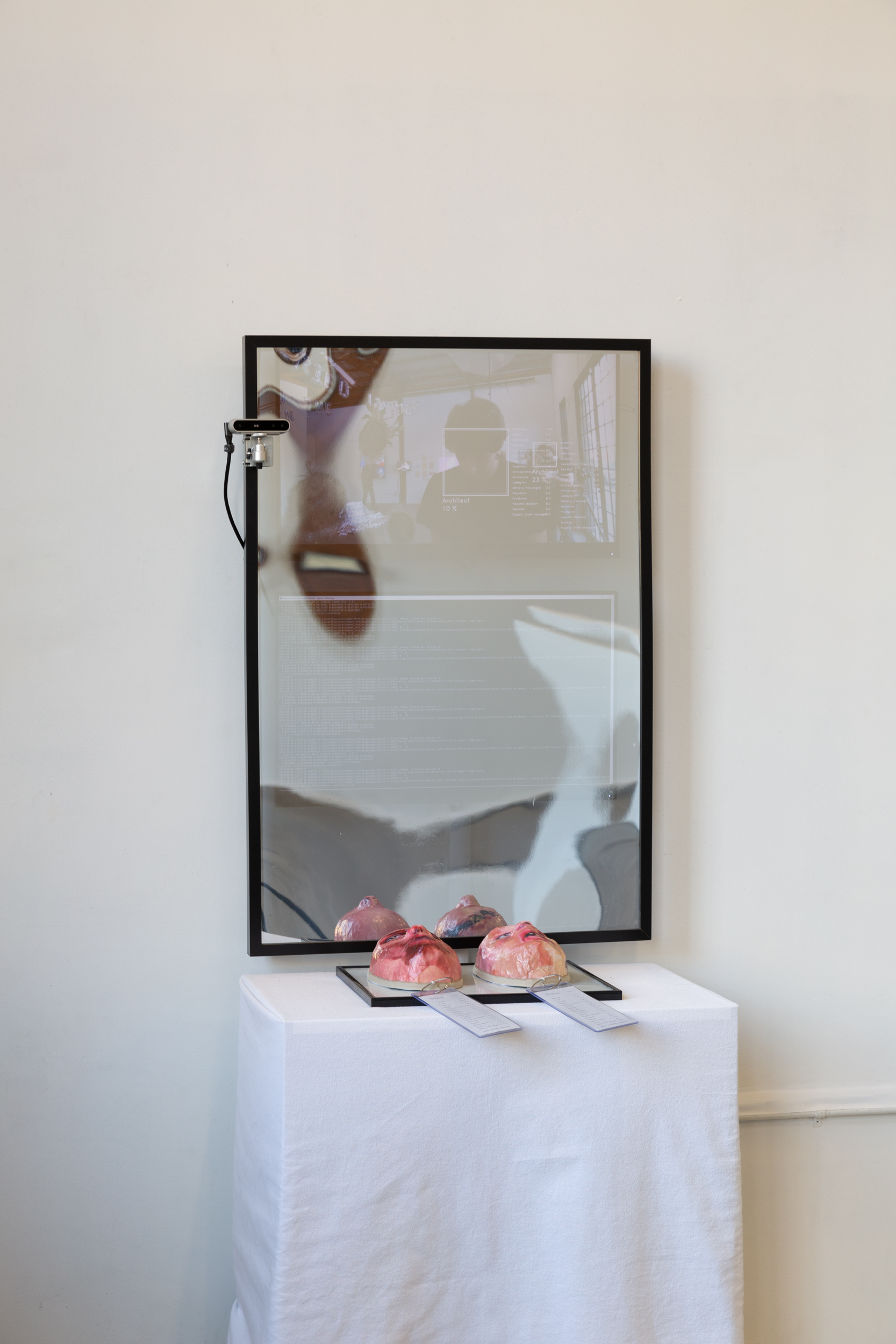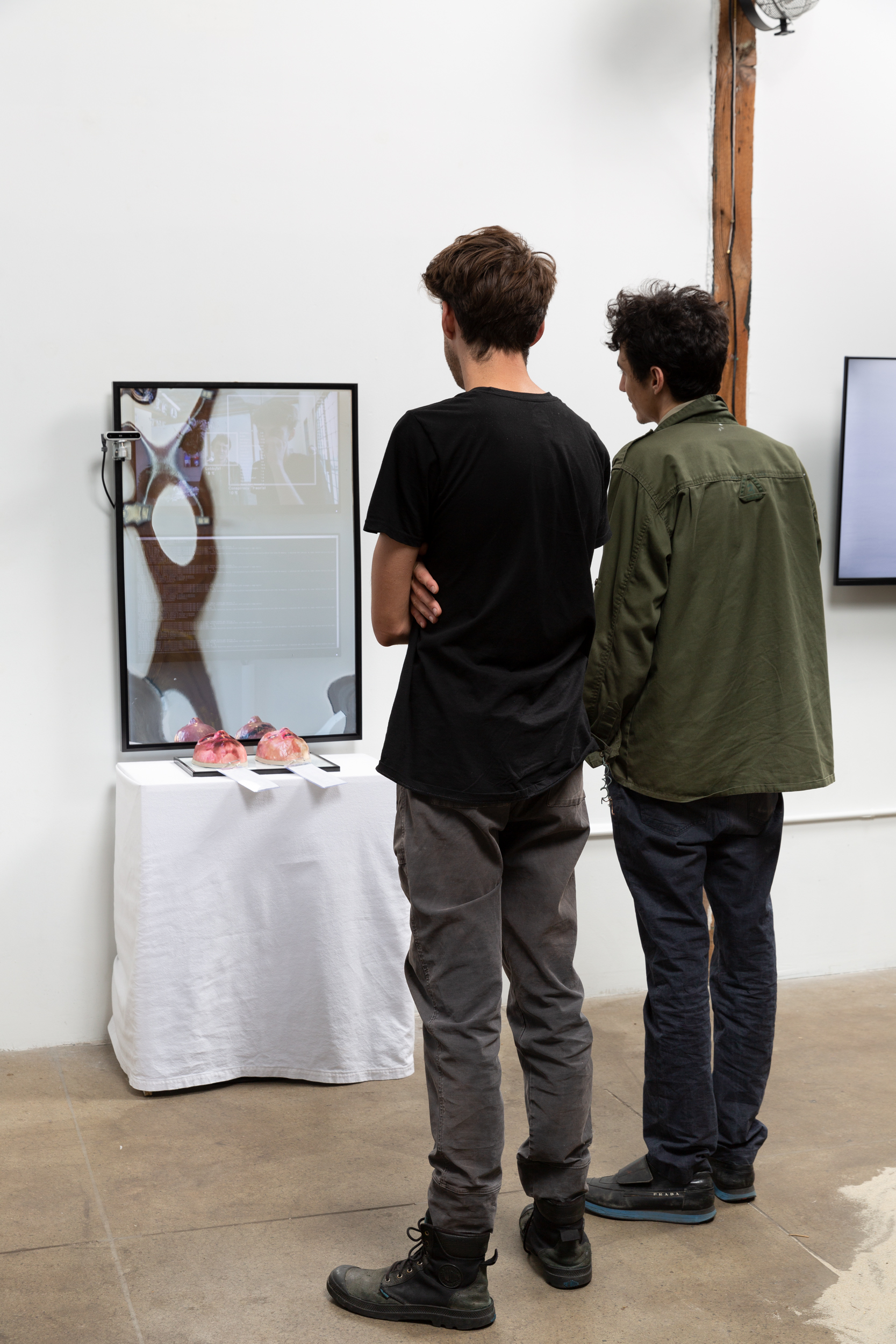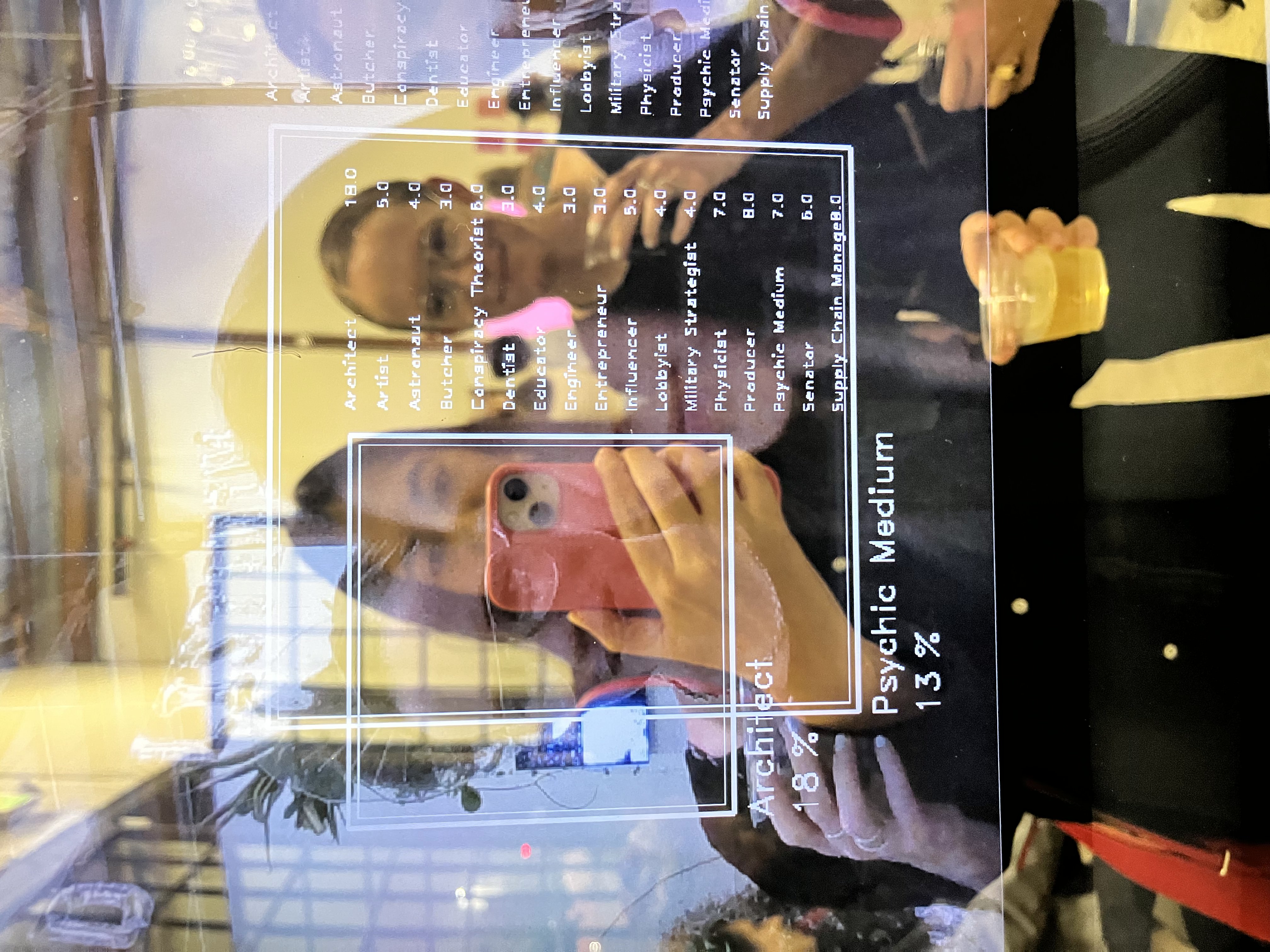Machinic Reflection
A time to tear and a time to mend, at
Wonzimer Gallery
October 7 - November 18, 2022
Curators: Naomi Stewart, Isabel Beavers
Artists: Erin Cooney, Paige Emery, Ibuki Kuramochi, Cara Levine, Maya Livio, Laure Michelon, Mich Miller
October 7 - November 18, 2022
Curators: Naomi Stewart, Isabel Beavers
Artists: Erin Cooney, Paige Emery, Ibuki Kuramochi, Cara Levine, Maya Livio, Laure Michelon, Mich Miller
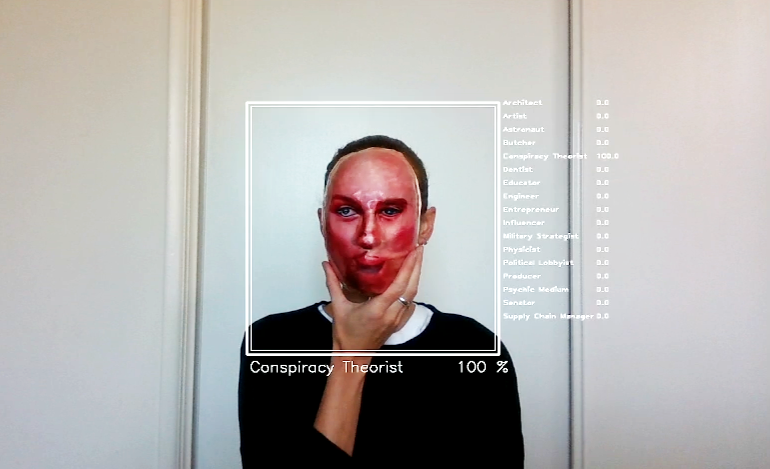

“A time to mourn and a time to dance
A time to tear and a time to mend
A time to be silent and a time to speak”
(Excerpt from Ecclesiastes 3)
a time to tear, a time to mend explores the advent of wisdom collection through ecological, historical, somatic, and technological artifacts. This exhibition asks: In the age of hyper-digitization, how can one assess, metabolize, and grieve traumatic events flashing across their timeline? How can one navigate information in a way that is healing and beneficial, both individually and communally? How can non-human ecologies inform our understanding of time and listening? What purpose do virtual and augmented realities serve in crafting our compass towards wisdom? Artists in SUPERCOLLIDER’s 2022 Sci-Art Ambassador cohort utilize AI, video, sculpture, painting, and performance to explore these questions.
Laure Michelon’s Machinic Reflection confronts bias in emerging technologies. A camera is placed strategically in the gallery that captures an image of any viewer in close proximity to the work. An algorithm trained on a curated dataset of categories. The proximate items on the vanity, [Mask.01.A] and [Mask.02.A] are AI-generated representations of the artist's face. The masks serve as a type of tool or prosthetic through which the user could disrupt their classification originally deemed by Machinic Reflection.
In a “post-pandemic” world, there is pressure to restore the status quo pre-2020. a time to tear, a time to mend invites visitors to consider alternatives to the status quo by fostering deeper connections to our bodies, other peoples, technology, and nature--to slow down and notice. These works offer space to metabolize and grieve trauma and loss, to rebuild and reimagine new ways of engaging with the world, to deepen our discernment in forming our opinions and disillusion us to paradigms that no longer serve us.
The exhibition will be on view at Wonzimer Gallery from October 7, 2022 - November 18, 2022.
Wonzimer Gallery
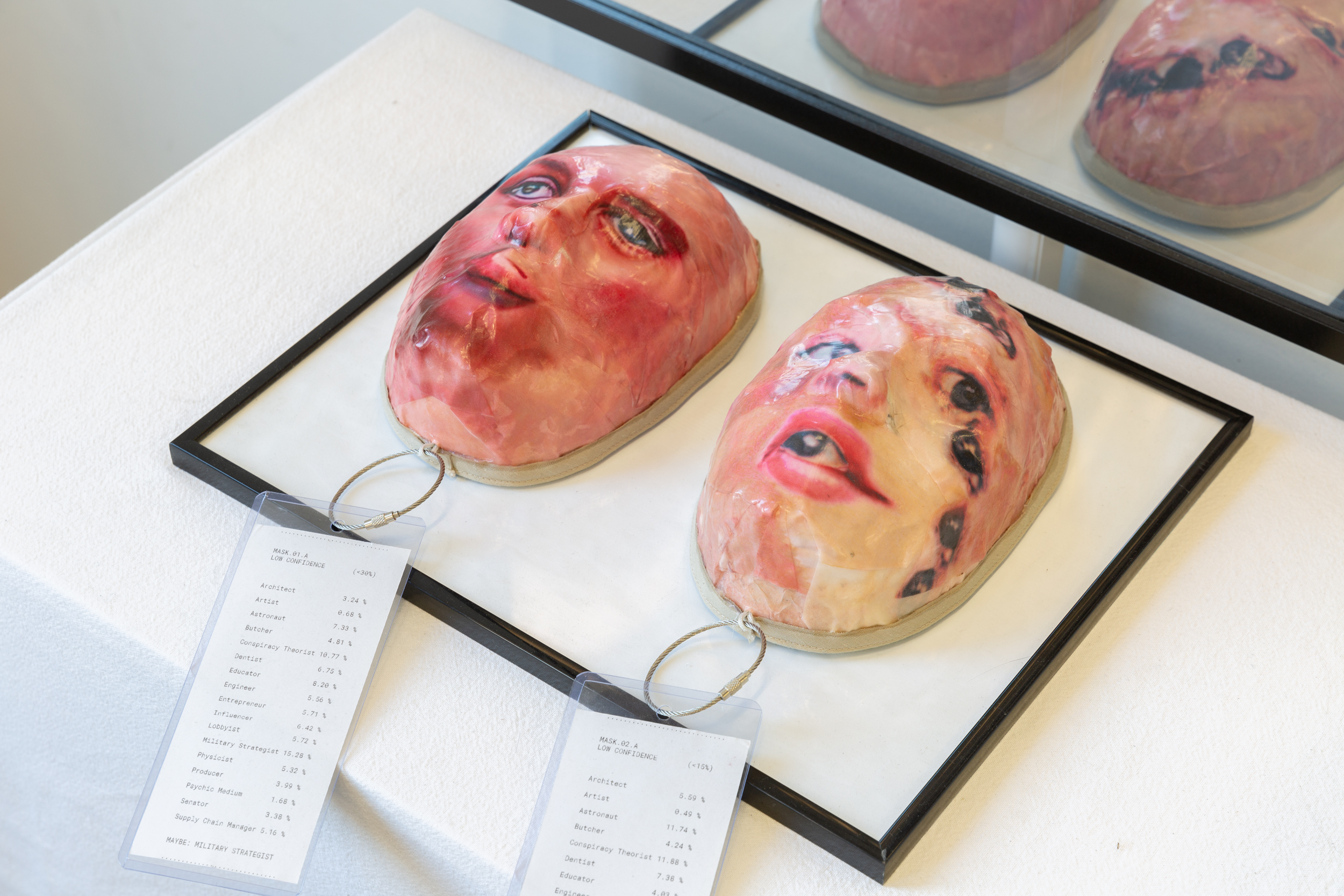
Translation
Terra [Alteritities] at
Biosphere 2, Oracle AZ
May 6 - May 8, 2022
Curators: Paige Emery & Laure Michelon
Artists: K Allado-McDowell, Benjamin Bratton, Alice Bucknell, Paige Emery, Xin Liu, Laure Michelon, Sahej Rahal, Yasaman Sheri
May 6 - May 8, 2022
Curators: Paige Emery & Laure Michelon
Artists: K Allado-McDowell, Benjamin Bratton, Alice Bucknell, Paige Emery, Xin Liu, Laure Michelon, Sahej Rahal, Yasaman Sheri



Terra [Alterities]
More than ever, the climate crisis highlights the need to think in new ways that are posthuman, or “other-than-human”. We must adopt alien, nonhuman, planetary, and intergenerational perspectives as our own. By what avenues can this openness be pursued, while at the same time, recognizing our limits? What new communication technologies and techniques can we embrace toward these ends? What types of languages might emerge from the growing consciousness of a global catastrophe of our own making?Biosphere 2 is home to the largest closed ecological system ever created. It was built as a research facility for studying the environment of “Biosphere 1,” planet Earth. The 3.14-acre glass dome was originally meant to demonstrate the viability of ecological systems to support life in outer space. It consisted of a 2-year experiment that enclosed eight humans in artificial biomes. However, the anthropocentric attempt to create this observable environment turned out to be an overly-ambitious concept that could not materialize. With Biosphere 2 as the backdrop, this exhibition reflects on our current crisis-ridden condition, imagining how to respond with more-than-human ways that allow space for alterities that cannot be enclosed upon.
The relationship between Biosphere 1 (planet Earth) and Biosphere 2 (its closed-circuit copy) is not unlike how the world is modeled within our individual and collective minds. The relationship between nature ,including its biological infrastructure, and consciousness, the mind, and its technological byproducts, including language, reason, and art, has been at the core of debates in 21st-century philosophy. The exhibition cross-pollinates these two seemingly separate, yet deeply intertwined subjects. In doing so, Terra [Alterities] questions how to cultivate a more fertile space for reorienting ourselves anew to the humility required in the face of otherness and the intimacy necessary for encountering local, planetary, and post-planetary environments.
Terra [Alterities] is a Supercollider exhibit taking place at Biosphere 2, May 6th-8th, 2022 coinciding with the Analog Astronaut conference. The opening reception is May 6th at 12pm and the outdoor installation will be open until 9pm through May 8th. Open hours of Biosphere 2 are 9am-4pm.
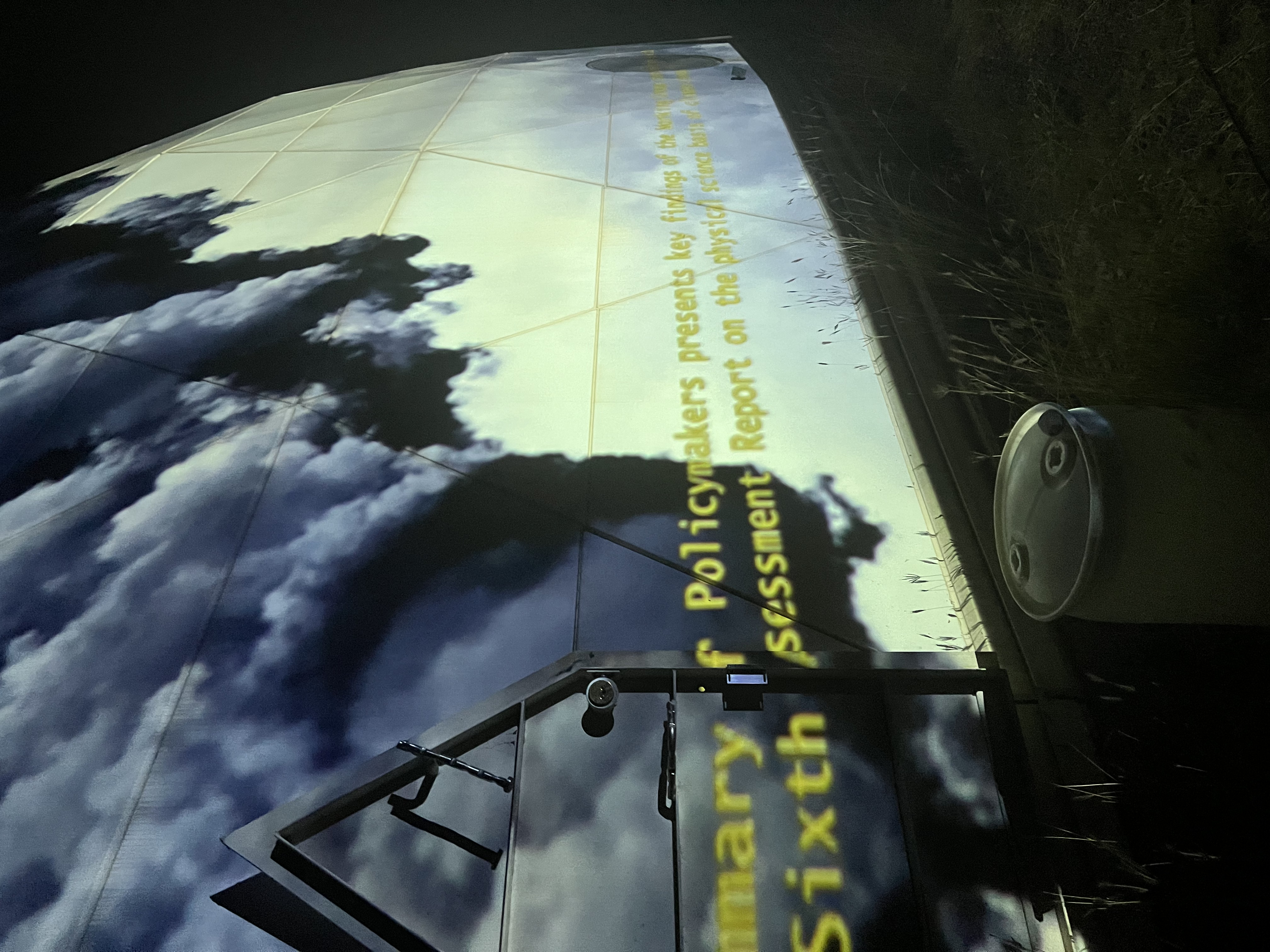

TRANSLATION
Climate change is essentially a pattern, or series of patterns drawn from planetary scale data
collection that is synthesized and interpreted
through a climate model.
By the time the information makes its way to the
public, it has already been translated through
numerous phases and filters - sensing, dataset
collection, climate modeling, IPCC condensation
and filtration, and media translations. As our
culture becomes more dependent on the visualization of information, it necessitates a re-interpretation of this information.
Translation emphasizes both the success and
shortcomings of the language used to write original documents. The act of translation suggests an
alteration; a change in a given language’s form,
condition or nature, often with the intention to
explain the original subject matter in terms that
can be more easily understood. By translating
the IPCC Climate report into visuals generated by
a variety of neural networks, Translation aims
to adjust the way we can be informed by the data
in the report. These trained machine learning
models reinforce and reconstitute known imagery
through the bias inherent in a curated dataset,
producing visuals that broaden the report’s ability to be understood, and serve as a broader call
to action.
[ Supercollider ]
[ AQNB ]
Phytogeography
FEELERS: Towards Reciprocal Sensing
September 16 - October 1, 2022
TetraPod Gallery with Fulcrum Festival: Deep Ocean/Deep Space
Curators: Isabel Beavers, Maya Livio, Mich Miller, Laure Michelon
Artists: Berfin Ataman, Paige Emery, Andy Graydon, Byron Kim, Maya Livio, Laure Michelon, Shuruq Tramontini, Elly Stormer Vadseth
September 16 - October 1, 2022
TetraPod Gallery with Fulcrum Festival: Deep Ocean/Deep Space
Curators: Isabel Beavers, Maya Livio, Mich Miller, Laure Michelon
Artists: Berfin Ataman, Paige Emery, Andy Graydon, Byron Kim, Maya Livio, Laure Michelon, Shuruq Tramontini, Elly Stormer Vadseth
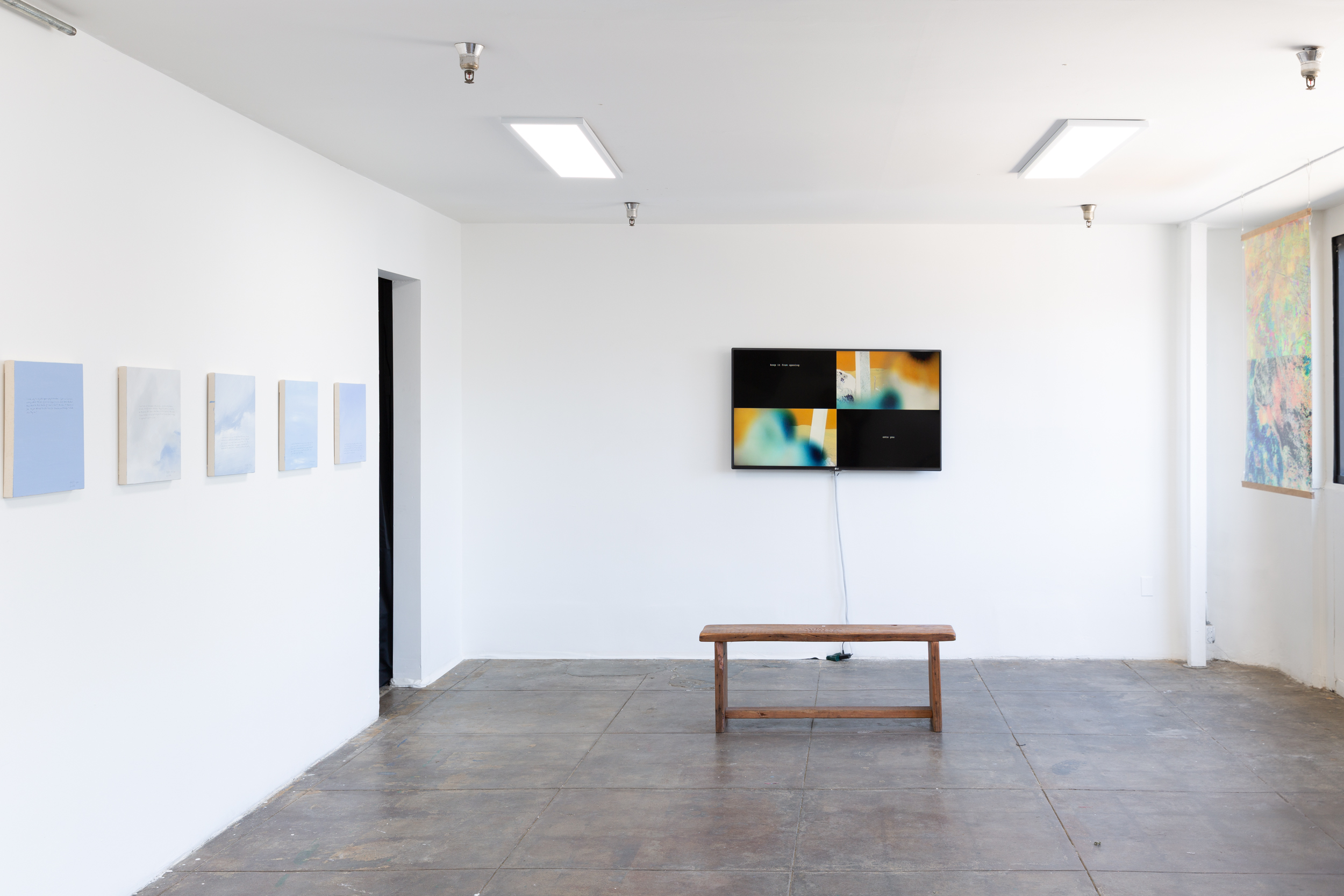
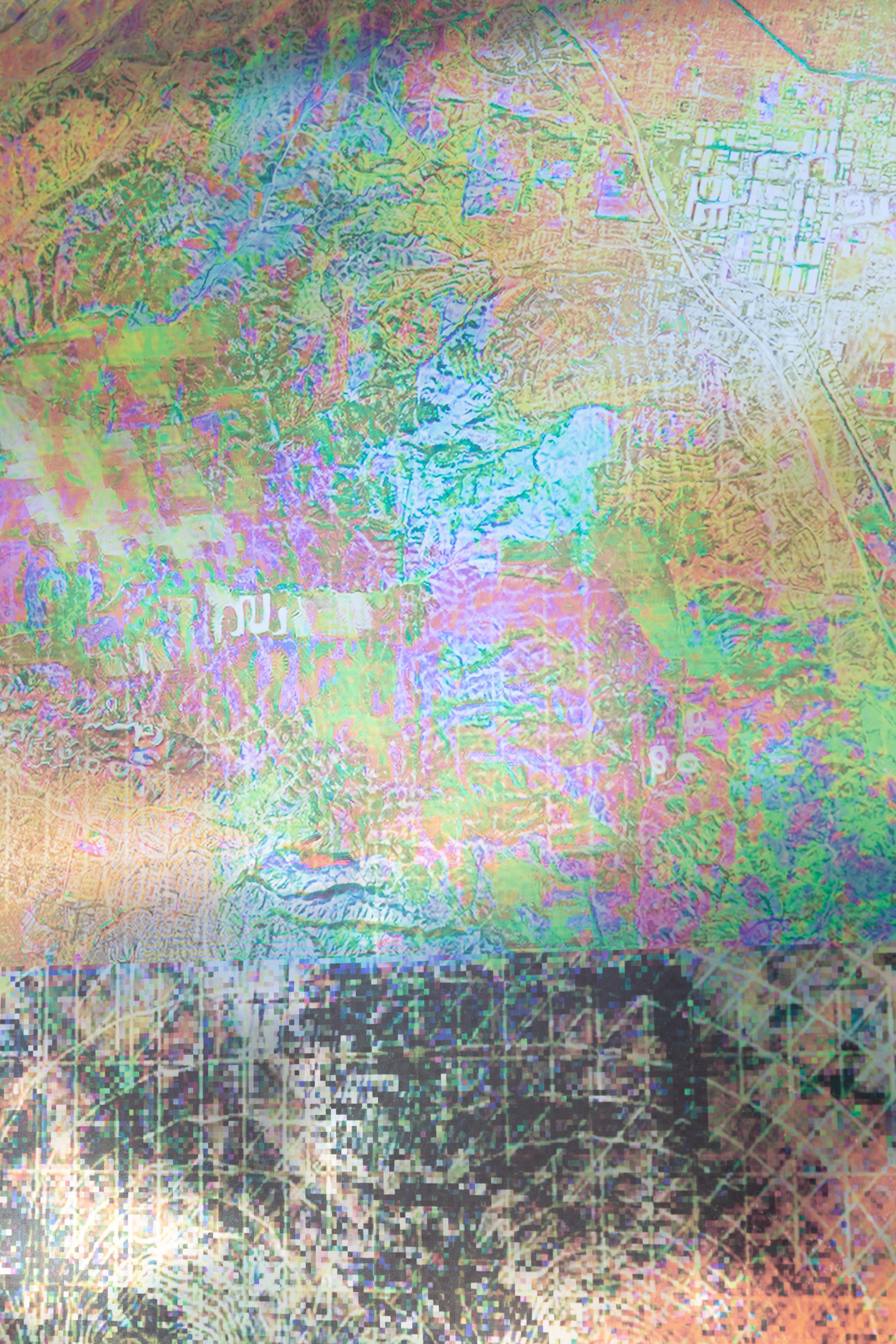
PHYTOGEOGRAPHY
What does a nation state’s border mean to the kelp forest? Instead, let us traverse the border between Phyllospadix and Alaria Marginata.
These Phytogeography maps depict a speculative future where borders are no longer defined by nation states or politics but instead renegotiated through the locations inhabited and claimed by plant species on the earth's crust.
Chemist James Lovelock and microbiologist Lynn Margulis inaugurated the Gaia Hypothesis, where Earth is a self-regulating entity that rules and controls herself. Harnessing the heat from our star, Gaia has produced the conditions that have led to the creation of life and humans are but a variation of her own matter. But each day we keep emitting more, adding more particles, energy, and heat into the earth’s systems, messing with her ability to maintain those conditions.
We sign empty political agreements to decrease emissions but overwhelmingly we blame other nation states, fail to hold corporations accountable, and don't consider the historical emissions we’ve generated. Our political, national, and socio-economical borders make it difficult to create actionable and impactful items. Nature, on the other hand, consistently ignores these boundaries; rivers change, coastlines erode, tectonic plates shift, and islands sink - this kinetic force is difficult to regulate as it seeks to ignore or break anthropogenic boundaries.
Using machine learning, LANDSAT imagery, and NOAA maps, Phytogeography, or the study of the geographic distribution of plant species and their influence on the earth, implies a new planetary scale shift in the understanding of how and where we exist. From this aggregation of data, Phytogeography aims to create an esthetic interface making the borders of planetary biology readable.
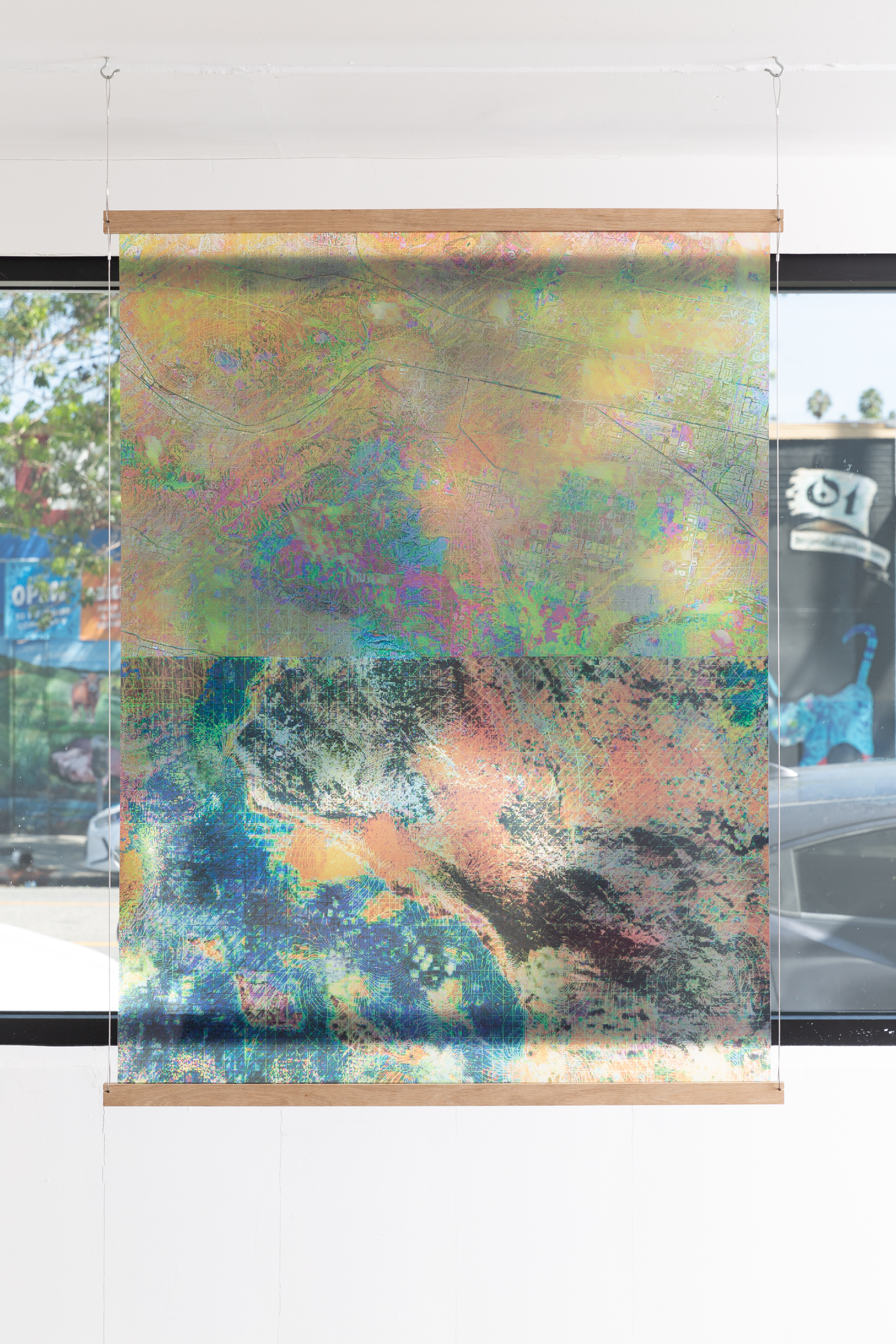
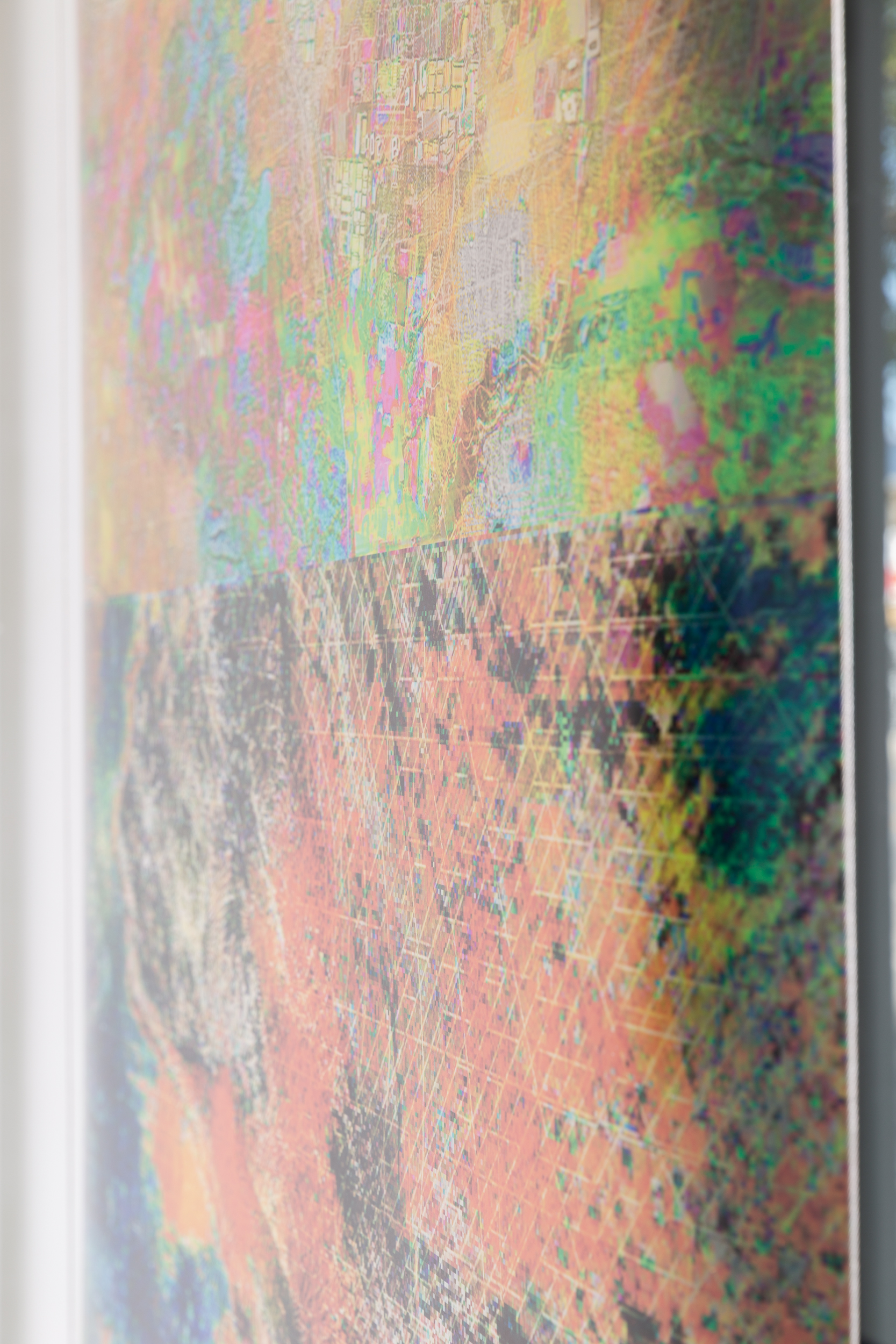
FEELERS: Towards Reciprocal Sensing
The climate crisis originated in an unraveling—with human animals becoming disentangled from their nested ecologies and instead envisioned as central planetary figures. In the process, privileged human forms of sensing, perceiving, and intelligence have been made dominant, pushing a rich diversity of ways of knowing and feeling to the margins. How might sensing and thinking with vegetal, animal, and other multispecies intelligences reconfigure our planetary relations? How might dominant knowledge systems be reconnected with marginalized wisdoms? And how might we seek shared sensory understandings with beings very different from us, from the deep recesses of the sea to extraterrestrial life?Through these works of video, painting, kinetic sculpture, site-specific installation, VR, and film, ‘FEELERS’ proposes expanded sensoria, complicating our understanding of feeling, sensing, and knowing. Affirming a plurality of sensemaking, the works adopt deliberate and exploratory methods that re-orient humans in relation to more-than-human beings, complicate notions of intelligence, and re-introduce perspectives outside of our own. In doing so, they generate new possibilities for respecting and connecting with multispecies understandings.
[ Supercollider ]
[ Fulcrum Festival ]
[ LA Weekly ]
NN City
While working for M. Casey Rehm (Studio Kinch)
서울도시건축전시관 Seoul, Korea
Seoul Biennale of Architecture and Urbanism
2021
서울도시건축전시관 Seoul, Korea
Seoul Biennale of Architecture and Urbanism
2021
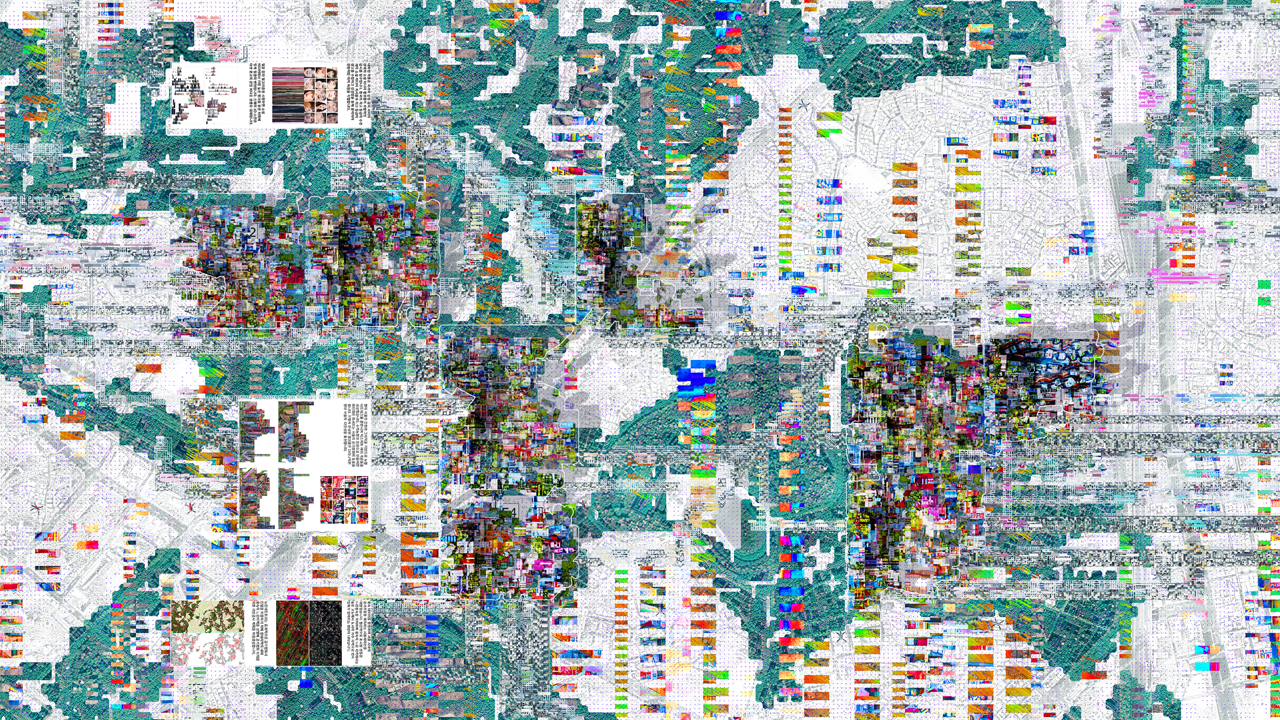


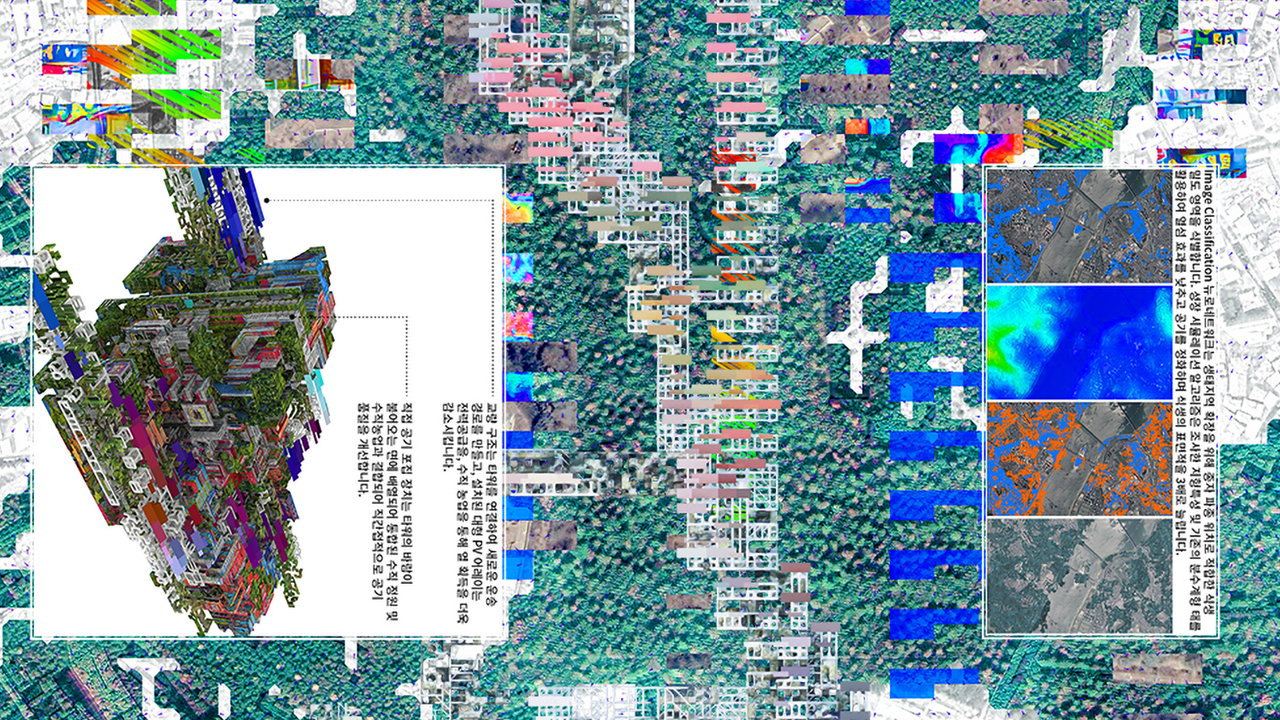
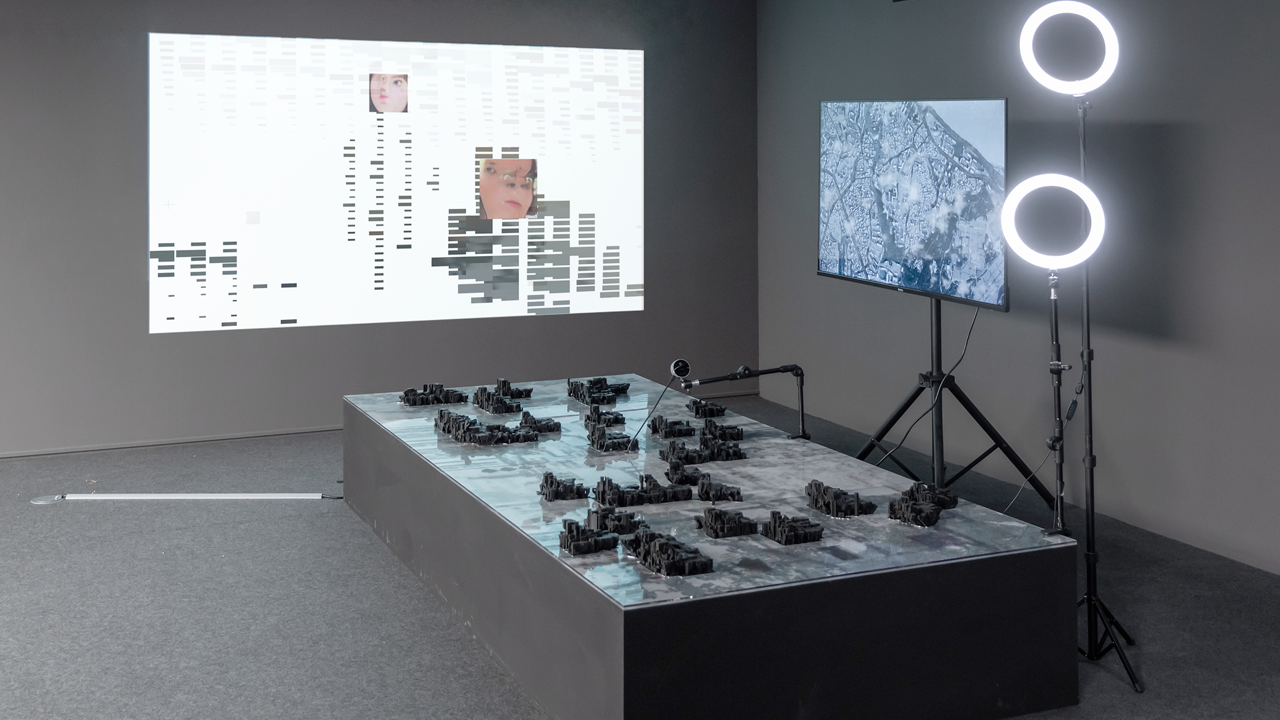
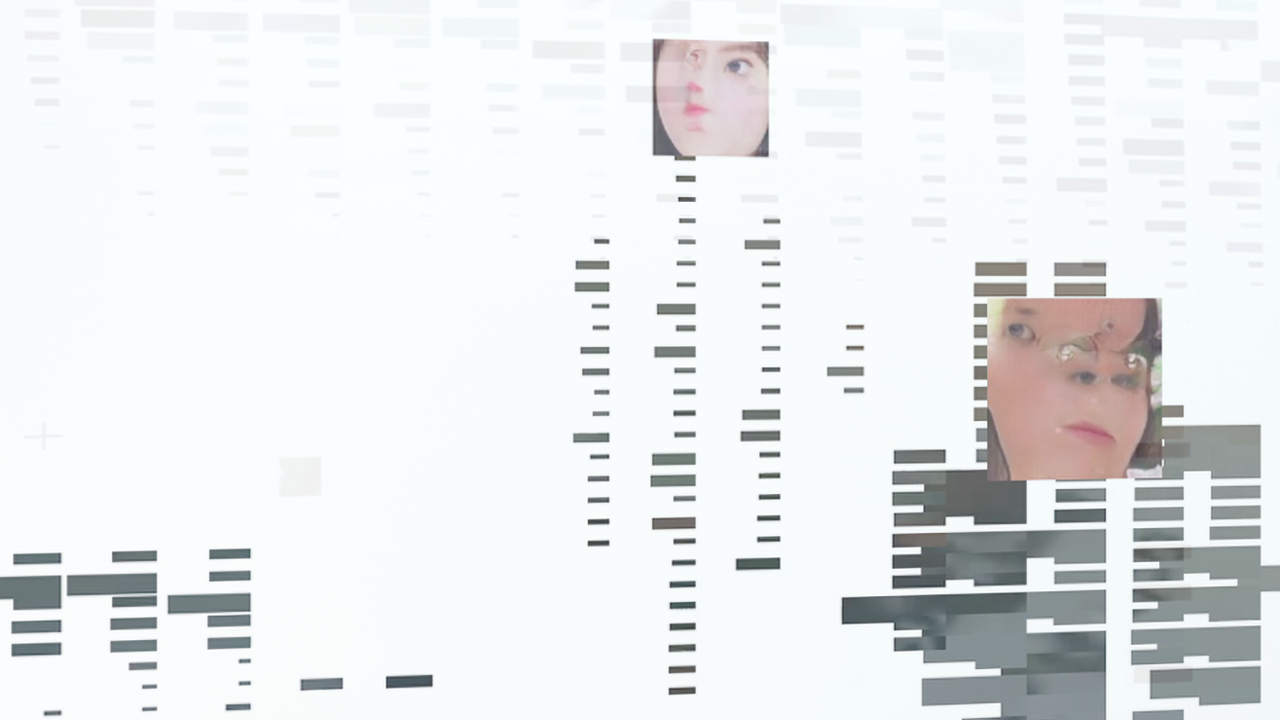
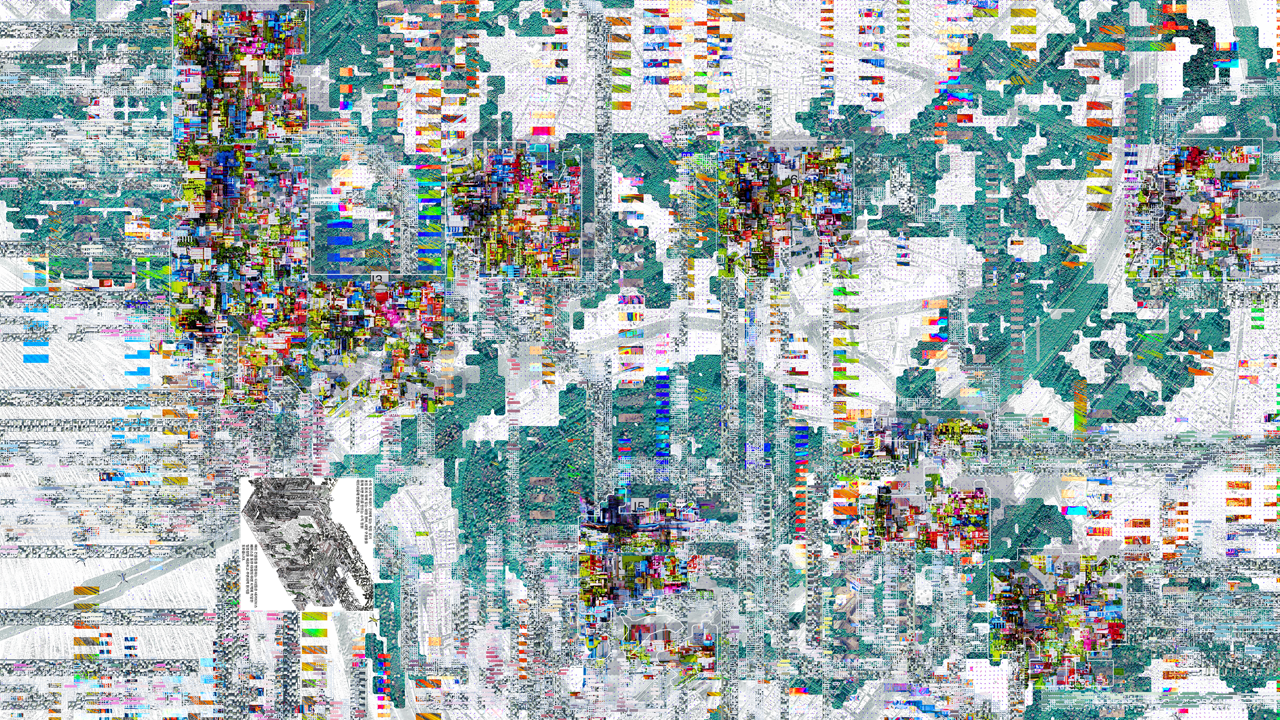

‘Jackie’
Music video for Yves Tumor
With Actual Objects, 2021
With Actual Objects, 2021
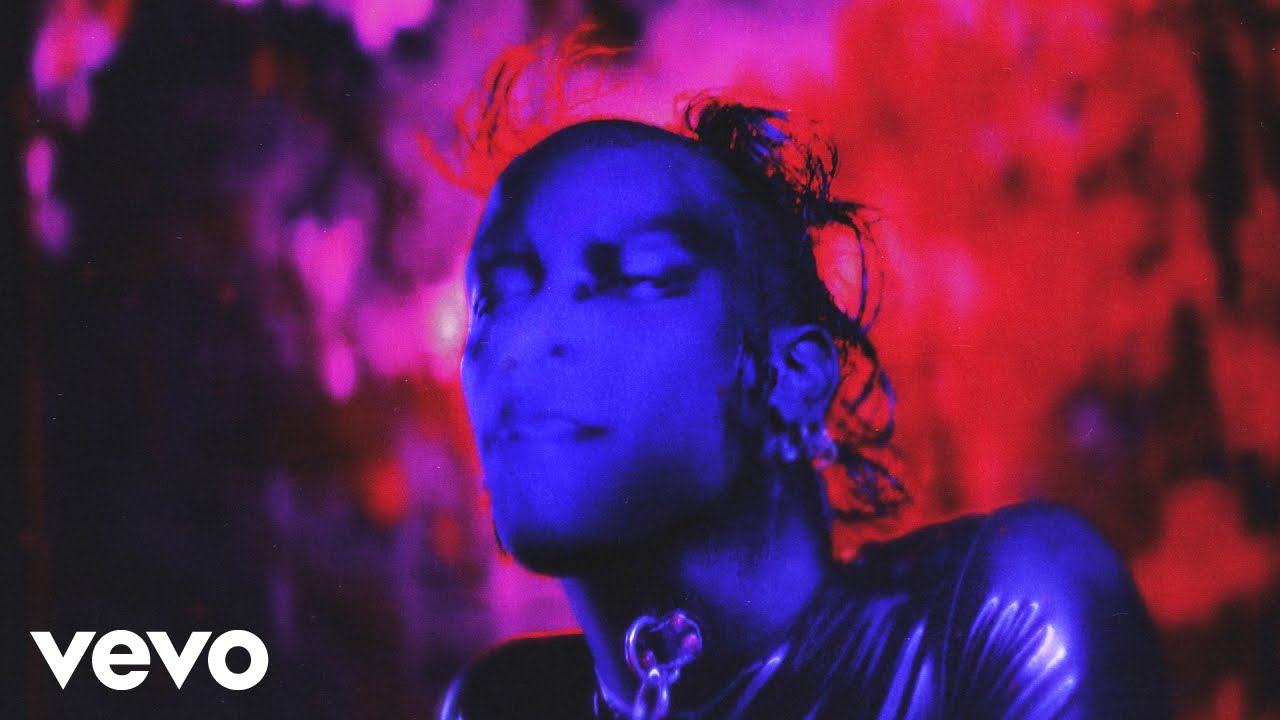
24–09–2024

